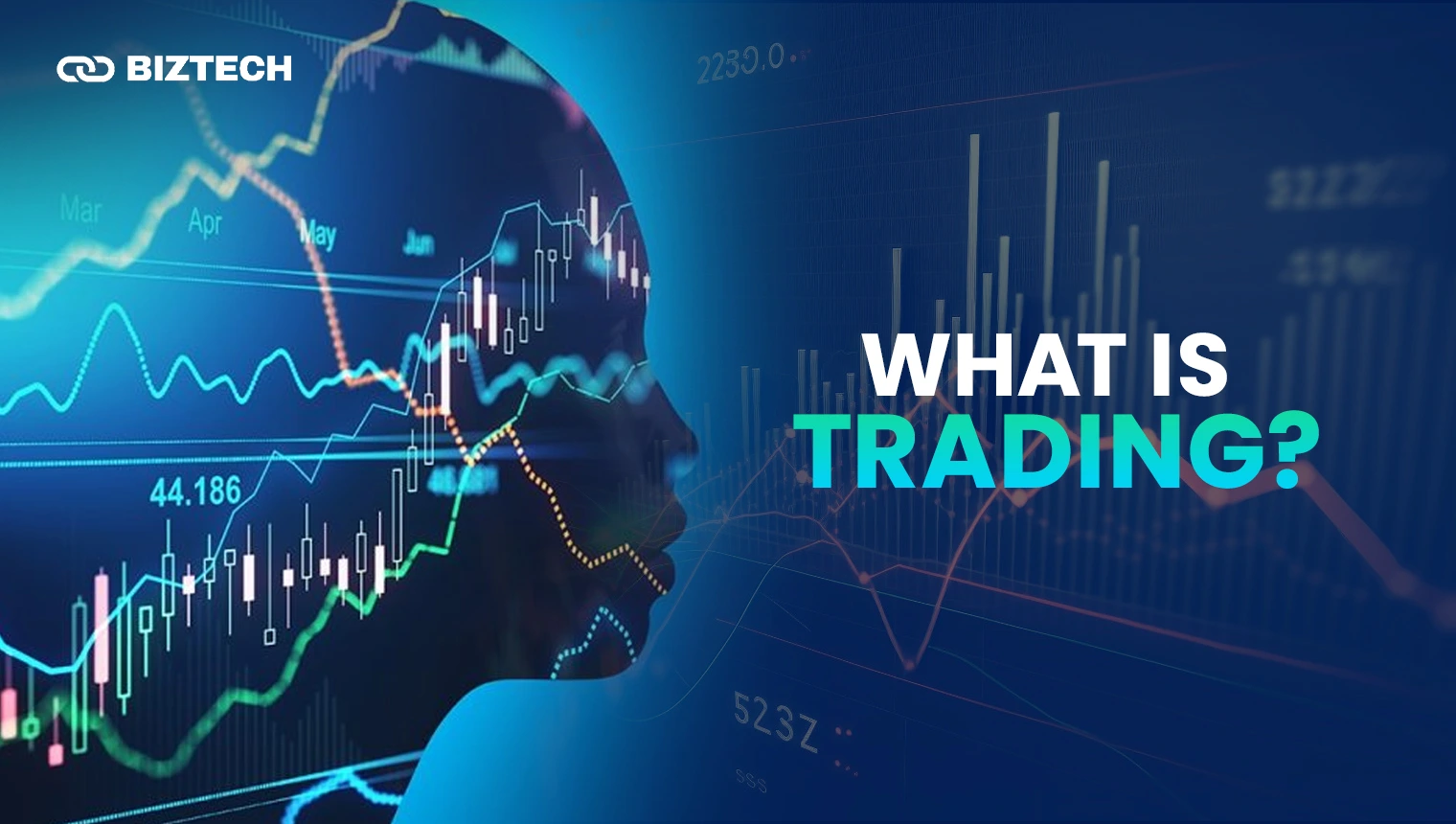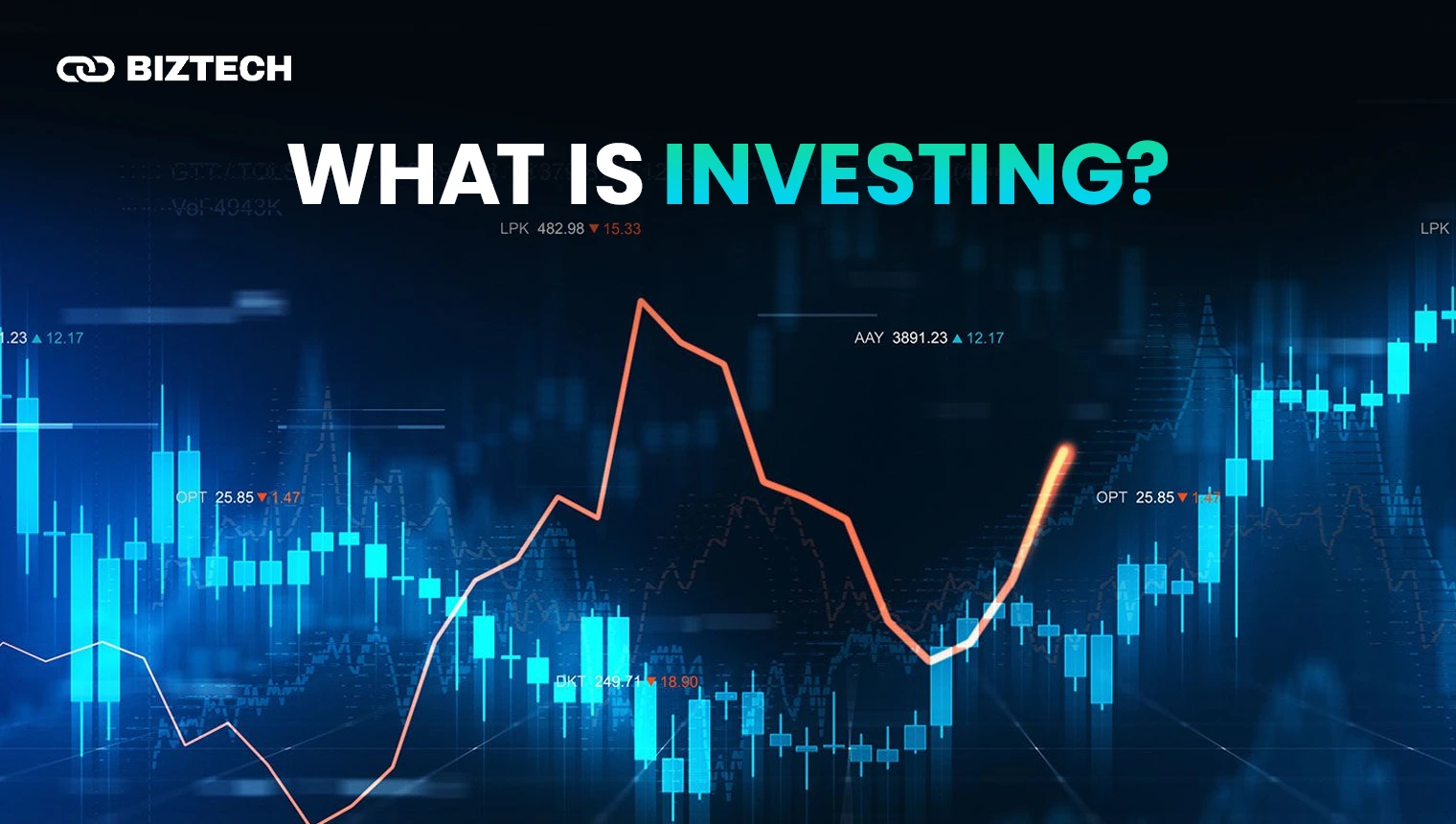Introduction
The subject of trading vs investing has raged among financial enthusiasts, experts, and anybody looking to develop their money through the financial markets. While trading and investing are ways to make money, the differences in their methodologies, time commitments, and risk profiles sometimes need clarification, leading many people to use the phrases interchangeably.
- Introduction
- What is Trading?
- Trading styles
- What is Investing?
- Investment styles
- Major Similarities Between Trading & Investing
- Major Differences Between Trading & Investing
- Which Is The Best for You?
- Understanding Trading and Investing:
- Key Differences Between Trading and Investing:
- A Personal Choice:
- Understanding Investment Time Horizon
- Riskiness in Trading & Investing
- Psychology approaches in Trading & Investment
- Conclusion
- Frequently Asked Questions (FAQs)
Both trading and investing have their own tax implications and investment options, but they share the end goal of outperforming inflation. While investing can be considered a way to ensure long-term financial stability, trading represents a portion of a portfolio that can potentially magnify gains or losses.
The distinction between trading and investing highlights a fundamental difference in method, time horizon, and risk, while the concept of day trading vs investing emphasises the dissimilar timelines involved. Whether to trade or invest is mostly determined by an individual’s risk tolerance, financial goals, and level of market activity. This complex terrain of trading vs investing has exciting prospects for novice and seasoned market participants, each with their own risks and benefits. Understanding these distinctions is critical for properly navigating financial markets and aligning tactics with personal goals.
What is Trading?
Trading is a financial market activity focusing on the short-term buying and selling of assets such as stocks, ETFs, bonds, and commodities. Trading, as opposed to investing, which emphasises retaining assets for lengthy periods of time (years or decades), seeks instant profit and necessitates an active strategy. This strategy involves frequent transactions, which are generally carried out daily, and can result in higher rewards but at a higher risk. Traders’ major purpose is to capitalise on market volatility to produce money in a shorter timeframe. Because of the shorter timescales, the compounding impact might be riskier for traders, as losses can easily outweigh earnings. Trading is naturally more complicated and necessitates much research, effort, and, in many cases, full-time focus. While trading can be part of an individual’s overall financial strategy, due to the increased risk, it is often limited to a portion of one’s investments, thereby ensuring long-term financial stability.
Trading styles
Trading, instead of investing, occurs on shorter timelines and frequently necessitates unique profit methods. While there is a considerable difference between trading and investing, the concept of trading itself spans a variety of techniques. Trading is frequently purchasing and selling financial assets such as stocks, indices, currencies, commodities, and cryptocurrencies in response to market volatility, speculation, and analysis.
Instead of investing, trading uses a ‘buy and hold’ strategy for long-term profit, leverages gains and requires less cash while focusing on short-term positions. It encompasses a wide range of tactics, such as day trading, scalp trading, swing trading, and position trading, but they all share the common goal of profiting from market volatility.
The distinction between trading and investing is critical in financial strategy since they analyse risks differently and have various timeframes and cost structures. The distinction between trading and investing and day trading vs investing emphasises the critical distinction between trading for short-term gains and investing for long-term growth and dividends. Understanding trading styles is, therefore, critical in matching personal financial goals and risk tolerance. It aids in making informed judgements appropriate for investment time, strategy, and expected gains or growth. More information on certain trading methods, such as day trading, swing trading, position trading, and scalp trading, will be covered in the next.
1. Day Trading
Day trading is a type of trading that involves purchasing and selling financial assets on the same trading day. The goal is to profit from quick price changes by capitalising on short-term adjustments in supply and demand. It necessitates close attention, strategic execution, and knowledge of market liquidity, asset volatility, and trade volume.
Technical analysis, news-based trading, and high-frequency trading are some approaches and strategies day traders use. In contrast, high-frequency trading employs algorithms to capitalise on short-term market inefficiencies. Using various strategies necessitates a well-structured plan, discipline, and appropriate cash to meet margin requirements. Demo accounts are frequently recommended for practice.
One advantage of day trading is the opportunity to minimise overnight risks, resulting in larger profits and the capacity to learn rapidly from trading decisions. It also reduces slippage risks and can be more cost-effective in certain instances. However, there are several disadvantages to day trading. The package includes higher commissions, time limits, and increasing risks. Most day traders lose money, and success necessitates discipline, research, and a thorough understanding of tax consequences.
Due to higher risks, competitiveness, and psychological biases, day trading frequently outperforms passive investing. Success depends on developing a sound trading strategy, managing risk effectively, and closely monitoring market developments. While successful day traders might earn a substantial income, hazards remain, particularly when trading with personal cash. The day trading strategy necessitates a thorough understanding of market mechanics, self-control, and the capacity to avoid impulsive errors when trading in markets such as stocks, FX, cryptocurrencies, commodities, and indices.
Read also: 10 Best Day Trading Stocks to Watch in 2023
2. Swing Trading
Swing Trading is a separate trading method that seeks to profit from market price volatility in the short to medium term. Unlike day trading, which entails closing contracts on the same day, swing trading involves keeping positions for several days to weeks and focuses on capturing specific price movements.
Swing traders generally use technical analysis to determine entry and exit positions, but they also frequently incorporate fundamental analysis. They use chart patterns, moving averages, and momentum indicators to forecast price moves and plan trades. This technique frequently employs tools such as buy triggers, stop-loss settings, and risk assessment. The strategy is based on daily and weekly market emotion cycles, allowing traders to maximise short-term profit while managing capital flexibly.
One of the primary benefits of swing trading over day trading is the reduced time commitment. As a result, it may be compatible with full-time employment and flexible to various investment possibilities. Swing trading has the potential to provide 10-50% yearly returns while requiring no long-term capital commitment. New traders frequently prefer it due to its simplicity and accessibility via numerous tools and platforms.
Swing trading, despite its potential benefits, is not without danger. It puts traders at risk of overnight and weekend price gaps, which can result in unanticipated losses. Market timing issues and the possibility of missing out on high-performing equities complicate matters. The requirement for ongoing market surveillance necessitates a time commitment, and the strategy’s complexity might increase during periods of increased market volatility. Accurate forecasting and synchronisation with individual market conditions are critical for limiting large portfolio losses.
3. Position Trading
Position trading is a common strategy focusing on long-term market patterns. Traders who use this approach maintain positions for long periods of time, ranging from weeks to years. Position trading primarily relies on fundamental analysis and identifying long-term trends. Traders use technical and fundamental analyses to determine entry and exit locations. This technique involves identifying trends, calculating optimal entry/exit locations, placing stop-loss orders, and regularly monitoring investments. Support and resistance levels are also useful for establishing and closing trades, with resistance levels reflecting prior price struggles. Position trading normally favours assets such as equities, commodities, and indices. However, Forex trading should be avoided owing to volatility.
Position trading has various advantages due to its long-term nature. Position traders frequently report lower stress levels, potential gains, and cheaper transaction costs. This method offers greater flexibility because it focuses on larger price swings rather than short-term variations. The time-efficient character of this strategy, which focuses on long-term appreciation, adds to its appeal, particularly for those seeking long-term gains.
Despite its advantages, position trading has inherent problems and hazards. Longer holding periods necessitate a larger capital commitment, which might result in potential losses if not managed appropriately. This strategy also has fewer trading chances and may produce poorer returns than short-term strategies. Furthermore, position traders risk missing reversals and are more vulnerable to market occurrences that might disrupt long-term trends. Additional difficulties include projecting long-term trends and the consequent greater expenditures.
Position trading is best suited to bull markets and markets with strong trends. It starkly contrasts day trading and swing trading, both of which focus on short-term trades. Unlike day trading, which seeks trend peaks, position trading focuses on long-term growth rather than daily news or swings. Individual goals, market conditions, and the trader’s time commitment and risk tolerance all influence the suitability of position trading.
4. Scalp Trading
Scalp Trading is a quick trading approach that aims to profit from minor price swings in the financial markets. It entails making many trades daily, aiming for tiny gains with increasing position sizes for short holding periods. This approach is used in various asset types, including currency pairings in Forex and equities.
Scalping in the context of Forex aims for gains of 5 to 20 pips every trade. It uses leverage to increase earnings by leveraging minor price fluctuations through high-frequency trading. Traders utilise range and statistical tactics to purchase near support and sell near resistance, finding support and resistance levels. Scalpers trade stocks regularly, hoping to profit from minor price movements in seconds to minutes. They use technical analysis tools such as candlestick charts, stochastic, MACD, and RSI to operate on shorter timescales. Scalping’s high-volume nature, as witnessed in big volumes bought and sold with modest price fluctuations, accumulates small daily profits.
The benefits of scalping include eliminating overnight risk, adaptability to market volatility, and the potential for cumulative profits from many little deals. Scalping, on the other hand, has higher transaction costs and associated hazards. System faults, misjudgments, slippage during news events, poor execution or strategy, overtrading, and a lack of stop-loss mechanisms are examples of these. Furthermore, the severity of scalping necessitates constant monitoring and discipline from traders, which may only be appropriate for some. The technique is appropriate for traders that enjoy short-term trading styles and active market hours.
What is Investing?
Investing is allocating resources in the hope of reaping future benefits, such as increased returns. It can entail a variety of assets, ranging from the most basic, such as cash, to more volatile alternatives, such as commodities or stocks. Investments include profits, losses, appreciation, income, or a combination of these, and riskier investments may yield higher returns. Diversification is a frequent risk-mitigation approach, particularly for rookie investors.
Investing takes a long-term view, frequently relying on asset growth and appreciation. This distinction lies at the heart of the contrast between trading and investing. Understanding these contrasts is critical for anybody active in financial markets since they influence tactics, risks, and potential rewards. More information about investment styles will be provided in the next.
Investment styles
Investment styles vary and are geared to match investors’ varying needs and risk tolerances. There is no one-size-fits-all investing style; investment methods are adaptive and based on individual tastes, goals, and circumstances.
Investment styles are broadly divided into two types: active investing and passive investing. Each type has its own risk-return profile and is tailored to distinct financial goals. Active investing, for example, entails high-risk, market-focused tactics aimed at short-term returns. Passive investing is a low-risk, long-term method that attempts to mimic market indices to reduce risk through diversification and low expenses.
An investor’s investment style should be aligned with long-term comfort and risk tolerance, considering the potential for higher returns, stability, and growth. Finally, recognising one’s investment style is critical to successfully navigating the market, as it allows for selecting investments that correspond to individual preferences and needs.
1. Active investing
Active investing is a method in which investors actively manage funds, sometimes with the assistance of portfolio managers and analysts, to outperform market indices. Active investing, as opposed to passive investing, which emphasises long-term growth through a buy-and-hold strategy, focuses on continual buying and selling to capitalise on short-term profits.
Active investing entails trading regularly and intentionally, closely monitoring equities numerous times daily, and employing calculated entry and exit locations to maximise short-term profits. It seeks to outperform benchmarks and indexes by enlisting the help of skilled analysts to execute strategic stock trades. This could entail concentrating on solid fundamentals such as return on equity, low debt, and steady profitability. Swing trading and considering factors other than benchmark tracking, such as business results, are frequently used.
Active investment in the hands of qualified managers can be a strong instrument, especially during tumultuous markets. Opportunities to generate alpha and beat indices can be grasped by selecting inexpensive stocks, rapidly selling underperformers, and actively managing taxes. Active strategies’ intrinsic flexibility provides for greater responsiveness to ever-changing market conditions.
However, it’s crucial to note that active investing has negatives, such as greater costs due to frequent transactions and management fees ranging from 0.10% to more than 2% of assets. This method also carries greater risks and may need to be revised for sustained long-term benefits. Furthermore, minimum investment requirements may disadvantage small investors.
2. Passive investing
Passive investing is a financial strategy focusing on gradually creating wealth over time through a buy-and-hold method. It strives to replicate market returns rather than outperform them, distinguishing it from active investing, which seeks to outperform the market in the short term.
Investing in stocks or bonds that match market indexes is common in passive investing to replicate market performance. Index funds, Exchange Traded Funds (ETFs), and other index-based investments are common tools in this strategy. These investments offer advantages such as cheap fees, transparency, tax efficiency, and ease of use. Because the goal is to match rather than beat the market, the method minimises trading, avoiding frequent trading expenses.
Passive investment has grown in popularity for a variety of reasons. It reduces costs, which is especially important for high-net-worth investors seeking to reduce expenses. Furthermore, passive investing promotes diversification by decreasing specific risks connected with individual stocks or industries. However, automated solutions like ETFs, Index Funds, and Diversified Funds help maximise profits with minimal effort and are appropriate for persons with multiple obligations.
However, passive investment has several drawbacks. It is subject to complete market risk and lacks flexibility, particularly when markets fall. It is also confined by tracking specific indices, which may result in lower returns than some active strategies.
Major Similarities Between Trading & Investing
The major similarities between trading and investing will represent these similarities in a table format and elaborate on each one.
| Similarity | Explanation |
| Compound Returns Opportunity | Compound gains are possible in trading and investment. Compounding produces returns on investments, with more gains accruing over time. While trading is riskier owing to the shorter timescale, long-term investing provides for recovery and growth after market downturns. |
| Potential Dividend Income | Certain trading and investing investments, such as certain stocks and funds, can pay periodic dividends. Dividends add to total returns, and reinvesting them can help long-term investors by increasing returns. |
| Beating Inflation Objective | Both trading and investing aim to reduce inflation and increase buying power. Short-term traders, on the other hand, may need help with this since volatility might stymie their efforts, whereas long-term investing methods can more easily assess inflation-adjusted results. |
| Opening Accounts to Trade | Trading and Investing both need the creation of accounts to purchase and sell assets such as stocks, bonds, and mutual funds. This resemblance is part of the fundamental framework of both approaches and is critical for reaching personal financial goals. |
| Goal of Financial Gains | Profit generation is the goal of both trading and investing. While their tactics and durations may differ, the underlying goal of financial benefits is shared by both areas, which focus on long-term or short-term asset management. |
Elaboration on Similarities:
- Compound Returns Opportunity: Compounding is the capacity to generate returns on both the original investment and previously reinvested returns. Trading has a shorter timescale, so the risks are larger, but compounding can still occur. Long-term investing provides for market recoveries and continuous development through compounding.
- Potential Dividend Income: Dividends are gains paid to shareholders. Assets such as stocks and funds can pay dividends in trading and investing, increasing total returns. Long-term investors may profit the most from reinvesting dividends, contributing to compound growth.
- Beating Inflation Objective: Over time, inflation erodes the real worth of money. Both trading and investing techniques seek to increase wealth faster than inflation while retaining or improving purchasing power. Because of the ability to weather market changes, this is frequently more possible with long-term investments.
- Opening Accounts to Trade: To buy and sell financial assets, traders and investors must create separate accounts. These accounts enable the management of many investment alternatives and are essential for trading and investing.
- Goal of Financial Gains: The basic purpose of any technique, whether short-term trading or long-term investing, is to make financial gains. Although the techniques, dangers, and timelines differ, both paths strive to benefit the financial markets.
Major Differences Between Trading & Investing
Here’s a table that demonstrates the key distinctions between trading and investing, followed by a full explanation of each distinction:
| Aspect | Trading | Investing |
| Time Horizon | Short-term (from seconds to months) | Long-term, frequently lasting years |
| Risk Level | Increased risk as a result of market volatility and leverage | Reduce risk by diversifying your portfolio and investing for the long term. |
| Approach & Analysis | Technical analysis, emphasising chart patterns and indicators | Financial analysis, industry performance, and macroeconomic considerations are all part of the fundamental analysis. |
| Profit Objective | Profits from price adjustments in the short term | Gradual wealth building through dividends and interest |
| Effort & Complexity | More time and effort are required, as well as constant market monitoring. | Less complex, with frequent reliance on financial experts |
| Assets Involved | Futures and options are examples of varied assets. | Stocks, bonds, and mutual funds are all included. |
Explanation of Differences:
- Time Horizon: Trading is owning assets for shorter periods of time, such as days or months, to make instant profits. On the other hand, investing considers the long term, frequently holding assets for years to allow for sustainable growth.
- Risk Level: Trading carries a higher level of risk due to factors such as market volatility and leverage, which can magnify both gains and losses. With its long-term perspective and diverse portfolios, investing often entails lower risk.
- Approach & Analysis: Technical analysis is used by traders to discover market trends and successful patterns, depending on charts and other techniques. On the other hand, fundamental analysis is used by investors to assess a company’s financial health and potential for long-term growth while considering broader economic and industry issues.
- Profit Objective: Traders strive to profit from price movements in the short term, whereas investors want to profit from dividends, interest, and asset appreciation over time.
- Effort & Complexity: Trading necessitates more active participation, constant market monitoring, and comprehension of complicated instruments. Investing is less difficult, typically relying on financial professionals and focusing on a clearer plan.
- Assets Involved: While traders and investors work with stocks, bonds, and other conventional assets, traders frequently work with more diverse and sophisticated assets such as futures and options.
Which Is The Best for You?
Those looking to earn in financial markets frequently consider trading vs investing. It’s critical to note that while these two tactics serve the same aim, they have very different techniques and prerequisites for success. In this section, we’ll look at the distinction between trading and investing.
Understanding Trading and Investing:
Trading entails the pursuit of short-term gains through frequent transactions, which frequently include the purchase and sale of various financial assets such as stocks, commodities, or currencies. The holding duration varies according to trading strategy, such as day trading, swing trading, or position trading, and can range from seconds to years.
On the other hand, investing seeks to accumulate wealth over a longer period, generally coinciding with long-term goals such as retirement or schooling. The emphasis here is on purchasing and holding assets such as stocks, mutual funds, or bonds over an extended period of time.
Key Differences Between Trading and Investing:
- Time Commitment and Expertise: Trading necessitates significant time and market knowledge, whereas investing may allow for more passive monitoring with the assistance of financial specialists.
- Profit Motives: While traders profit from short-term market swings, investors seek long-term growth through dividends, interest, and market trends.
- Tax Implications and Risk Profile: Besides the shorter durations, trading frequently incurs higher taxes and exposes the individual to heightened loss risk. On the other hand, investing may qualify for lower long-term capital gains taxes and provides risk reduction through diversification.
- Emotional Control and Complexity: Trading necessitates frequent decisions and emotional balance, whereas investing takes a more “set-it-and-forget-it” approach, allowing for more deliberate decision-making.
- Impact of International Events and Market Volatility: Short-term trading, particularly day trading, is extremely vulnerable to market fluctuations and worldwide events. Long-term investors, on the other hand, seek solid companies and examine long-term patterns.
A Personal Choice:
The decision between “day trading vs investing” is influenced by personal preferences, financial objectives, risk tolerance, and time commitment. Trading may suit individuals who want to be immersed in market changes, whilst investing may suit those who are more patient and risk-averse. Whatever path you choose, your success will depend on knowing these differences and making an informed decision that fits your circumstances.
Understanding Investment Time Horizon
Understanding the time horizon is critical when distinguishing between trading and investing because it is a critical aspect that influences financial market decision-making. Here’s a quick rundown of the time horizon that influences trading and investing.
1. Trading
The emphasis in trading, particularly day trading, is on short-term opportunities ranging from a few minutes to a few weeks. Traders use technical analysis, charts, and patterns to generate short-term predictions and respond fast to market changes. Day trading emphasises rapid purchasing and selling during a single day to reduce overnight hazards. This strategy necessitates specialised platforms and the capacity to quickly respond to market cycles, maximising opportunities and managing gains and losses using mechanisms such as take profit and stop loss. However, the risks are larger because of the numerous transactions, leverage, trading frequency, size, volatility, margin, and short selling.
2. Investing
Investing, on the other hand, aims for long-term passive value appreciation. The approach is less time-consuming and comprises a “buy-and-hold” strategy. Investors base their decisions on a company’s or asset’s fundamentals, metrics, valuations, and long-term prospective growth. They evaluate underlying asset worth, review corporate operations, have voting rights, and seek to profit from long-term performance through dividends and share buybacks. Investing has a reduced risk profile, and investors frequently use a combination of capital preservation, income-oriented, and growth-oriented asset allocation strategies.
Read also: 10 Best Long-Term Stocks to Buy and Hold Forever
Riskiness in Trading & Investing
The concept of risk is fundamental in trading and investing, but the degree and kind of risk differ dramatically. This riskiness distinction may lead an individual to favour one technique over another based on personal preferences, goals, and risk tolerance.
1. Trading
Short-term trading entails holding holdings in stocks, bonds, futures, and swaps for short periods ranging from seconds to months. Trading is deemed risky due to the use of leverage and quick choices. For example, day trading and scalp trading necessitate regular market monitoring and quick reactions to capitalise on chances and minimise losses. The emphasis on share prices and the possibility of significant losses needs emotional control and a higher level of competence and awareness of asset-market relationships. The tax consequences of short-term earnings and the complexity and increased dangers associated with faster profits all add to trading’s hazardous nature.
2. Investing
Investing, on the other hand, seeks long-term returns by keeping assets such as stocks, bonds, mutual funds, and ETFs for longer periods of time, frequently exceeding a year. Investing is frequently perceived as more patient and secure, with capital expanding slowly through dividends and depending on the basic analysis. Several investment types, active or passive investing, focus on long-term growth and capital preservation, particularly for risk-averse individuals. The promise of compound returns, dividend income, and favourable tax consequences for long-term gains reduce the perceived risk of investing.
Psychology approaches in Trading & Investment
Trading and investing have different psychological approaches, reflecting their diverse tactics, dangers, and essential mindsets. It is an important factor that impacts the success or failure of both practices.
Psychology plays an active part in determining short-term moves and reactions in the context of trading. Traders frequently take on more risk and are influenced by macroeconomic news and market developments. Emotions like fear and greed frequently control their actions, which can lead to dangerous behaviour or premature position closure. Trading psychology studies psychological biases and behavioural finance features like herd behaviour, emotional gaps, and loss aversion. Maintaining a peak mindset can be critical for short-term traders to avoid impulsive behaviours and stress.
On the other hand, investors are primarily concerned with long-term wealth development and rely on rigorous examination of a company’s fundamentals. They seek to grasp a company’s strengths and frequently make more sensible decisions. For investors, luck is less important, and the emphasis is on discipline rather than reacting to short-term news and trends. Long-term investors frequently benefit from tactics like diversification, which allows them to build balanced portfolios that reduce risk and promote a more reasonable psychological approach.
1. Patience in Investment
Patience is an important psychological component of investing that distinguishes it from trading in the context of trading vs investing.
The psychology of investment is linked to patience and dedication to a long-term objective. Investors must be able to tolerate short-term market volatility while being dedicated to their long-term judgement and fundamental research. This necessitates the capacity to disregard short-term price fluctuations and market noise, allowing assets to grow naturally over time.
Patience becomes the fulcrum underpinning investment methods’ effectiveness when comparing trading versus investing. It allows investors to focus on a company’s future potential rather than being swayed by immediate market reactions or opinions. Patience aligns investors with a strategy that prioritises long-term goals, tolerates market swings, and emphasises a systematic, research-based approach.
2. Stress of Trading
Understanding the psychological components of trading and investing is critical for success. Trading frequently requires quick decisions and market monitoring, making it a stressful endeavour for many people. The drive to profit from swift market changes, combined with a high amount of risk, can cause traders to get stressed. According to a UC, study stated in the book “Trading Strategies 101: Discover the Psychology of a Successful Trader,” How to Use Simple Trading and Tools to Thrive in Bull, Bear, and Sideways Markets,” the failure rate among retail traders and day traders is significant, with approximately 90% losing. This statistic emphasises the psychological toll that trading may have on people.
Investing, on the other hand, requires a longer-term perspective and is based on fundamental analysis. This strategy is less stressful than trading since investors commonly endure market swings and focus on consistent, long-term growth rather than short-term rewards. The distinction between trading and investing reflects differing mindsets and degrees of stress, with trading frequently regarded as the more stressful and risky of the two options.
Conclusion
Trading and investing are two independent financial market techniques, each with its own set of methodologies, goals, time horizons, and risk tolerances. Trading is characterised by frequent buying and selling and capitalises on short-term market swings. It takes more time, has more risks and expenses, and necessitates regular monitoring and technical analysis.
On the other hand, investing takes a long-term approach, focused on growth through interest and reinvestment. It is based on basic analysis, focusing less on real-time data and short-term occurrences, and aims for consistent and generally safe earnings. It frequently necessitates understanding financial fundamentals, such as ratios and valuations, to achieve stability with longer waiting periods and lower transaction costs.
Despite their differences, both trading and investing contribute to market liquidity and help to keep the market balanced. Individual preferences, risk tolerance, and financial goals should all be considered when deciding between the two. Trading is appropriate for market-savvy individuals wanting immediate profits, whilst investing is appropriate for those seeking long-term stability and growth. Combining both tactics may result in clarity and consistency. Thus, it is critical to align with one’s financial goals.











